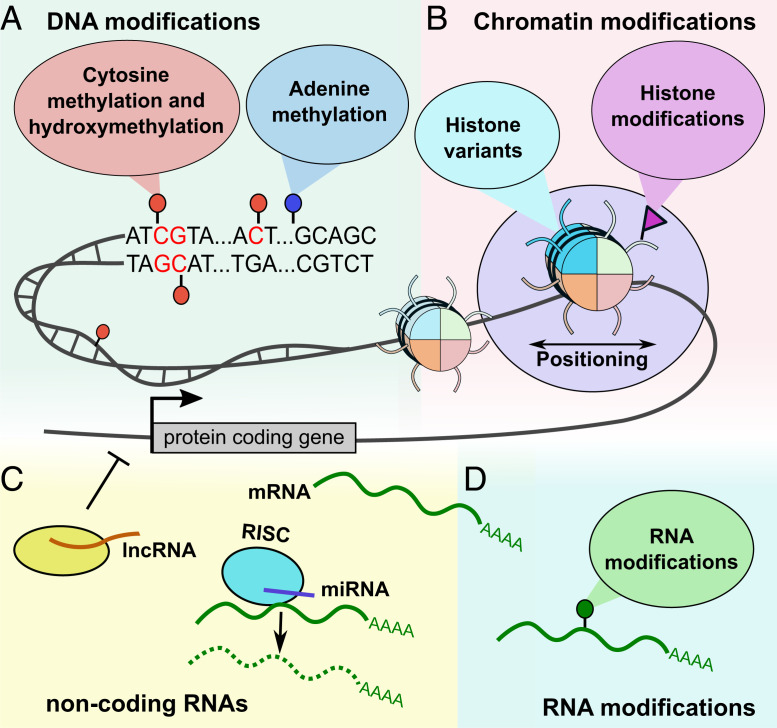Fig. 1.
Complex landscape of epigenetic mechanisms. (A) DNA can be modified at cytosine and adenine residues by the addition of chemical groups. Cytosines can be modified by methylation, hydroxymethylation (hmC), formylation (fC), and carboxylation (caC), while adenines are modified by methylation. (B) Nucleosomes, composed of DNA wrapped around histone proteins, can change position to increase or decrease DNA accessibility. In addition, nucleosomes can be modified by the incorporation of histone variants and the addition of posttranslational modifications. (C) Noncoding RNAs play an important role in transcription regulation and are sometimes considered an epigenetic mechanism. Within RNA-induced silencing complexes (RISCs), miRNAs mediate the recognition and binding of RNAs that become targeted for degradation. lncRNAs are associated with other complexes and can activate or repress transcription. (D) All RNA nucleotides can be modified by the addition of chemical groups. The list of RNA modifications includes N6-methyladenosine (m6A) and over 160 other chemical modifications.

